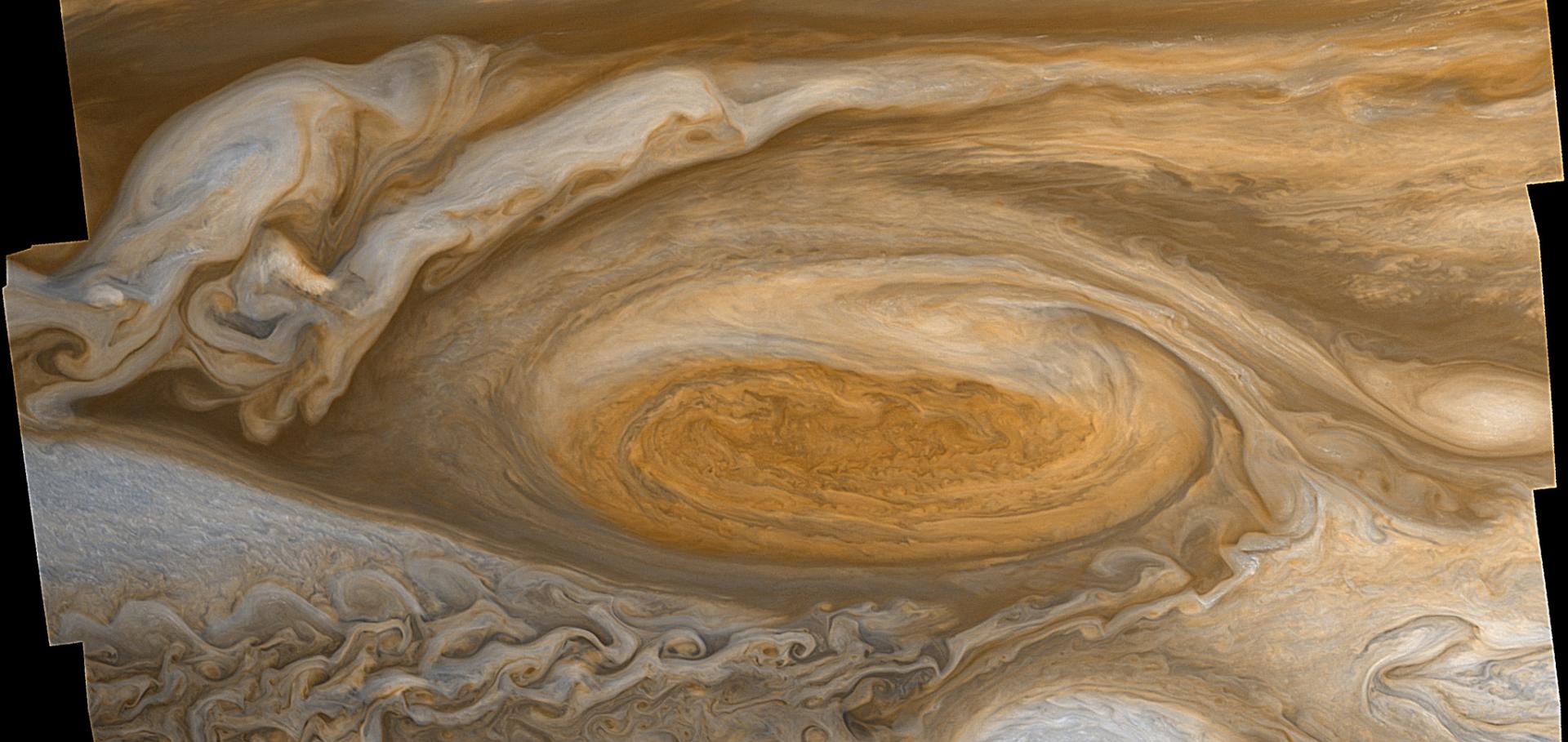An experimental investigation of blocking by partial barriers in a rotating baroclinic annulus
Geophysical and Astrophysical Fluid Dynamics (2017) 1-33
Abstract:
© 2017 Informa UK Limited, trading as Taylor & Francis Group We present a series of experimental investigations in which a differentially-heated annulus was used to investigate the effects of topography on rotating, stratified flows with similarities to the Earth’s atmospheric or oceanic circulation. In particular, we compare and investigate blocking effects via partial mechanical barriers to previous experiments by the authors utilising azimuthally-periodic topography. The mechanical obstacle used was an isolated ridge, forming a partial barrier, employed to study the difference between partially blocked and fully unblocked flow. The topography was found to lead to the formation of bottom-trapped waves, as well as impacting the circulation at a level much higher than the top of the ridge. This produced a unique flow structure when the drifting flow and the topography interacted in the form of an “interference” regime at low Taylor number, but forming an erratic “irregular” regime at higher Taylor number. The results also showed evidence of resonant wave-triads, similar to those noted with periodic wavenumber-3 topography by Marshall and Read (Geophys. Astrophys. Fluid Dyn., 2015, 109), though the component wavenumbers of the wave-triads and their impact on the flow were found to depend on the topography in question. With periodic topography, wave-triads were found to occur between both the baroclinic and barotropic components of the zonal wavenumber-3 mode and the wavenumber-6 baroclinic component, whereas with the partial barrier two nonlinear resonant wave-triads were noted, each sharing a common wavenumber-1 mode.Phase synchronization of baroclinic waves in a differentially heated rotating annulus experiment subject to periodic forcing with a variable duty cycle
Chaos AIP Publishing 27:12 (2017) 127001
Abstract:
A series of laboratory experiments in a thermally driven, rotating fluid annulus are presented that investigate the onset and characteristics of phase synchronization and frequency entrainment between the intrinsic, chaotic, oscillatory amplitude modulation of travelling baroclinic waves and a periodic modulation of the (axisymmetric) thermal boundary conditions, subject to time-dependent coupling. The time-dependence is in the form of a prescribed duty cycle in which the periodic forcing of the boundary conditions is applied for only a fraction ߜ of each oscillation. For the rest of the oscillation, the boundary conditions are held fixed. Two profiles of forcing were investigated that capture different parts of the sinusoidal variation and ߜ was varied over the range 0.1 ߜ 1. Reducing ߜ was found to act in a similar way to a reduction in a constant coupling coefficient in reducing the width of the interval in forcing frequency or period over which complete synchronization was observed (the “Arnol’d tongue”) with respect to the detuning, though for the strongest pulselike forcing profile some degree of synchronization was discernible even at ߜ ൌ 0.1. Complete phase synchronization was obtained within the Arnol’d tongue itself, though the strength of the amplitude modulation of the baroclinic wave was not significantly affected. These experiments demonstrate a possible mechanism for intraseasonal and/or interannual “teleconnections” within the climate system of the Earth and other planets that does not rely upon Rossby wave propagation across the planet along great circles.The Atmospheric Dynamics of Venus
Space Science Reviews 212:3-4 (2017) 1541-1616
Abstract:
© 2017, Springer Science+Business Media B.V. We review our current knowledge of the atmospheric dynamics of Venus prior to the Akatsuki mission, in the altitude range from the surface to approximately the cloud tops located at about 100 km altitude. The three-dimensional structure of the wind field in this region has been determined with a variety of techniques over a broad range of spatial and temporal scales (from the mesoscale to planetary, from days to years, in daytime and nighttime), spanning a period of about 50 years (from the 1960s to the present). The global panorama is that the mean atmospheric motions are essentially zonal, dominated by the so-called super-rotation (an atmospheric rotation that is 60 to 80 times faster than that of the planetary body). The zonal winds blow westward (in the same direction as the planet rotation) with a nearly constant speed of ∼100ms−1 at the cloud tops (65–70 km altitude) from latitude 50°N to 50°S, then decreasing their speeds monotonically from these latitudes toward the poles. Vertically, the zonal winds decrease with decreasing altitude towards velocities ∼1–3ms−1 in a layer of thickness ∼10km close to the surface. Meridional motions with peak speeds of ∼15ms−1 occur within the upper cloud at 65 km altitude and are related to a Hadley cell circulation and to the solar thermal tide. Vertical motions with speeds ∼1–3ms−1 occur in the statically unstable layer between altitudes of ∼50–55km. All these motions are permanent with speed variations of the order of ∼ 10 %. Various types of wave, from mesoscale gravity waves to Rossby-Kelvin planetary scale waves, have been detected at and above cloud heights, and are considered to be candidates as agents for carrying momentum that drives the super-rotation, although numerical models do not fully reproduce all the observed features. Momentum transport by atmospheric waves and the solar tide is thought to be an indispensable component of the general circulation of the Venus atmosphere. Another conspicuous feature of the atmospheric circulation is the presence of polar vortices. These are present in both hemispheres and are regions of warmer and lower clouds, seen prominently at infrared wavelengths, showing a highly variable morphology and motions. The vortices spin with a period of 2–3 days. The South polar vortex rotates around a geographical point which is itself displaced from the true pole of rotation by ∼ 3 degrees. The polar vortex is surrounded and constrained by the cold collar, an infrared-dark region of lower temperatures. We still lack detailed models of the mechanisms underlying the dynamics of these features and how they couple (or not) to the super-rotation. The nature of the super-rotation relates to the angular momentum stored in the atmosphere and how it is transported between the tropics and higher latitudes, and between the deep atmosphere and upper levels. The role of eddy processes is crucial, but likely involves the complex interaction of a variety of different types of eddy, either forced directly by radiative heating and mechanical interactions with the surface or through various forms of instability. Numerical models have achieved some significant recent success in capturing some aspects of the observed super-rotation, consistent with the scenario discussed by Gierasch (J. Atmos. Sci. 32:1038–1044, 1975) and Rossow and Williams (J. Atmos. Sci. 36:377–389, 1979), but many uncertainties remain, especially in the deep atmosphere. The theoretical framework developed to explain the circulation in Venus’s atmosphere is reviewed, as well as the numerical models that have been built to elucidate the super-rotation mechanism. These tools are used to analyze the respective roles of the different waves in the processes driving the observed motions. Their limitations and suggested directions for improvements are discussed.Regimes of axisymmetric flow and scaling laws in a rotating annulus with local convective forcing
Fluids MDPI 2:3 (2017) 41
Abstract:
We present a numerical study of axisymmetric flow in a rotating annulus in which local thermal forcing, via a heated annular ring on the outside of the base and a cooled circular disk in the centre of the top surface, drives convection. This new configuration is a variant of the classical thermally-driven annulus, where uniform heating and cooling are applied through the outer and inner sidewalls respectively. The annulus provides an analogue to a planetary circulation and the new configuration, with its more relaxed vertical thermal boundary conditions, is expected to better emulate vigorous convection in the tropics and polar regions as well as baroclinic instability in the mid-latitude baroclinic zone. Using the Met Office/Oxford Rotating Annulus Laboratory (MORALS) code, we have investigated a series of equilibrated, two dimensional axisymmetric flows across a large region of parameter space. These are characterized in terms of their velocity and temperature fields. When rotation is applied several distinct flow regimes may be identified for different rotation rates and strengths of differential heating. These regimes are defined as a function of the ratio of the horizontal Ekman layer thickness to the non-rotating thermal boundary layer thickness and are found to be similar to those identified in previous annulus experiments. Convection without rotation is also considered and the scaling of the heat transport with Rayleigh number is calculated. This is then compared with existing work on the classical annulus as well as horizontal and Rayleigh-Bénard convection. As with previous studies on both rotating and non-rotating convection the system’s behaviour is found to be aspect ratio dependent. This dependence is seen in the scaling of the non-rotating Nusselt number and in transitions between regimes in the rotating case although further investigation is required to fully explain these observations.The Global Circulation
Chapter in The Atmosphere and Climate of Mars, Cambridge University Press (CUP) (2017) 229-294


